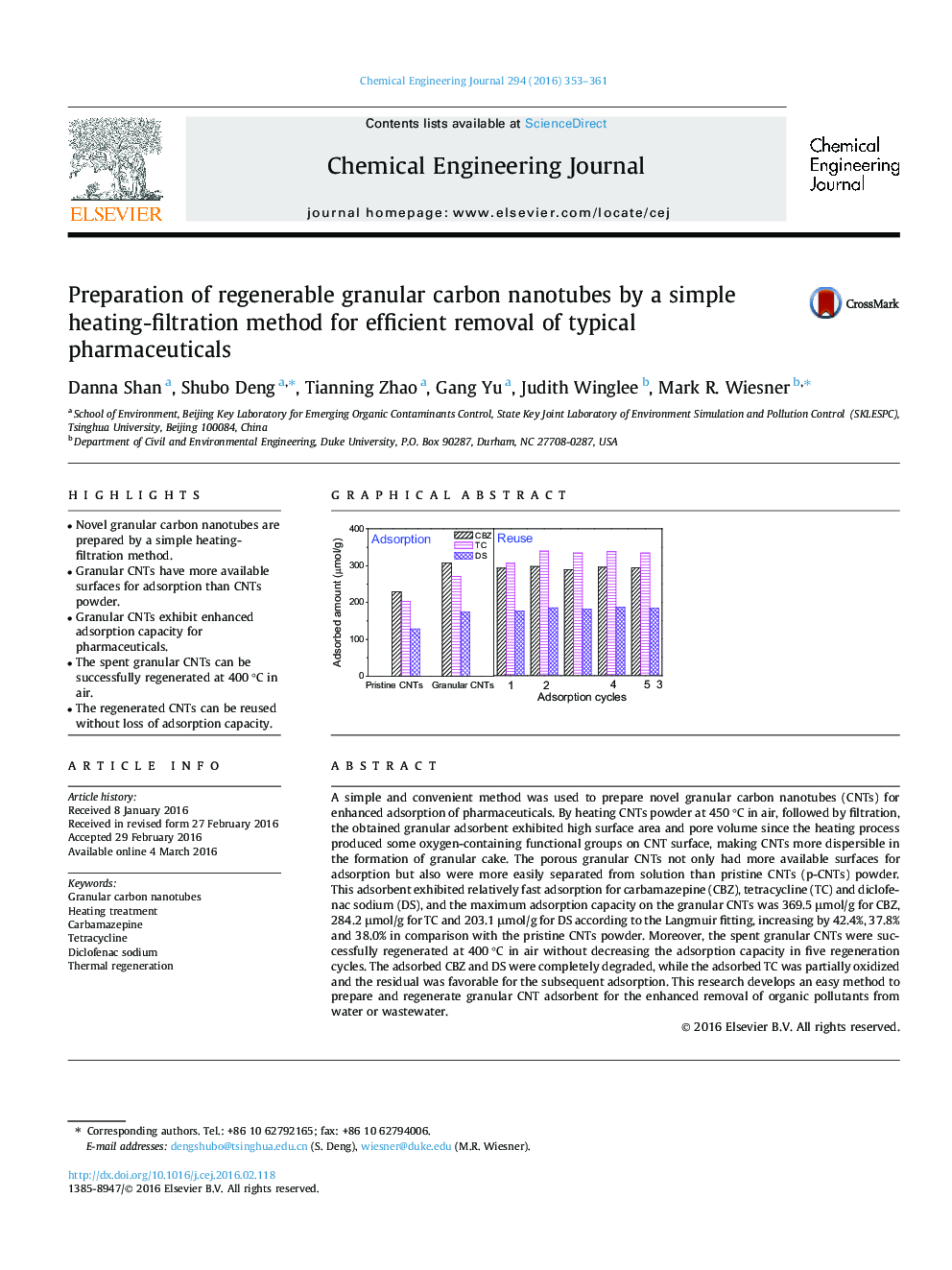| Article ID | Journal | Published Year | Pages | File Type |
|---|---|---|---|---|
| 145720 | Chemical Engineering Journal | 2016 | 9 Pages |
•Novel granular carbon nanotubes are prepared by a simple heating-filtration method.•Granular CNTs have more available surfaces for adsorption than CNTs powder.•Granular CNTs exhibit enhanced adsorption capacity for pharmaceuticals.•The spent granular CNTs can be successfully regenerated at 400 °C in air.•The regenerated CNTs can be reused without loss of adsorption capacity.
A simple and convenient method was used to prepare novel granular carbon nanotubes (CNTs) for enhanced adsorption of pharmaceuticals. By heating CNTs powder at 450 °C in air, followed by filtration, the obtained granular adsorbent exhibited high surface area and pore volume since the heating process produced some oxygen-containing functional groups on CNT surface, making CNTs more dispersible in the formation of granular cake. The porous granular CNTs not only had more available surfaces for adsorption but also were more easily separated from solution than pristine CNTs (p-CNTs) powder. This adsorbent exhibited relatively fast adsorption for carbamazepine (CBZ), tetracycline (TC) and diclofenac sodium (DS), and the maximum adsorption capacity on the granular CNTs was 369.5 μmol/g for CBZ, 284.2 μmol/g for TC and 203.1 μmol/g for DS according to the Langmuir fitting, increasing by 42.4%, 37.8% and 38.0% in comparison with the pristine CNTs powder. Moreover, the spent granular CNTs were successfully regenerated at 400 °C in air without decreasing the adsorption capacity in five regeneration cycles. The adsorbed CBZ and DS were completely degraded, while the adsorbed TC was partially oxidized and the residual was favorable for the subsequent adsorption. This research develops an easy method to prepare and regenerate granular CNT adsorbent for the enhanced removal of organic pollutants from water or wastewater.
Graphical abstractFigure optionsDownload full-size imageDownload as PowerPoint slide
